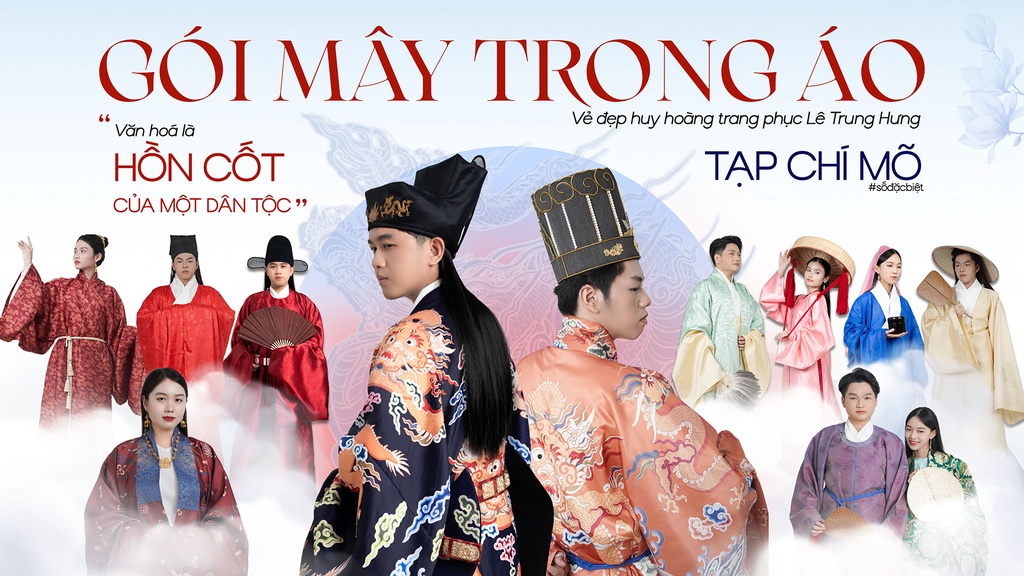để tặng cho tác giả tài liệu này


Đã đánh giá tài liệu
Cảm ơn bạn đã phản hồi

Tác giả: Từ Huỳnh Thy Anh, Lê Mai Huệ, La Duy Liêm, Phan Thuỳ Linh
Nhà cung cấp: Heritage Brand Review Award 2025
Ấn phẩm dự thi Heritage Brand Review Award - được sáng tác bởi nhóm thí sinh đến từ Đại học Kinh tế Thành phố Hồ Chí Minh - mang đến cách tiếp cận mới về cải lương, giúp loại hình nghệ thuật này đến gần hơn với thế hệ hiện đại qua góc nhìn trẻ trung, sáng tạo. Mời Quý độc giả thưởng thức và góp ý!
I. OPENING CLIP:
- Despite emerging centuries after traditional forms like chèo and hát bội, the art of cải lương has flourished remarkably within just a century, leaving a significant mark on Vietnamese culture, especially resonating with the people of Southern Vietnam.
- Since its inception, cải lương has remained the only theatrical form to achieve widespread popularity from the South to the North of Vietnam. During its golden era, cải lương reached a level of development and performance scale comparable to a true "entertainment industry." At that time, even modern forms like cinema or contemporary music could not rival its appeal and scope.
- Over more than 100 years of existence, cải lương has experienced countless ups and downs, moments of joy and sorrow. Yet, thanks to the profound impact it has made, cải lương has endured, becoming an irreplaceable soul of the southern region. Cải lương is not just something familiar to the people of the Mekong Delta; it is a source of pride and a unique cultural beauty for the entire Vietnamese nation, preserving genuine, simple, yet heartfelt emotions across many generations.
II. AN OVERVIEW OF CAI LUONG:
- Historical accounts trace the origins of cai luong back to 1918, when Mr. Châu Văn Tú founded the Thầy Năm Tú troupe in Mỹ Tho and built the Cinéma-Théâtra—now known as the Thầy Năm Tú Theater in Tiền Giang. The troupe’s debut performance was Kim Vân Kiều. However, at that time, the term "cải lương" had not yet come into use; instead, such troupes were referred to as "modern" or "contemporary."
- Some scholars suggest that the term "cải lương" originated from the early 20th-century reform movements across various social sectors, fueled by intellectuals and the press.
- Despite differing theories, most agree that the term "cải lương" is not just a label—it reflects the essence and mission of this art form. It signifies reform, evolution, and the blending of tradition with modernity, folk elements with scholarly depth—ultimately creating an artistic form rich in Vietnamese cultural identity.
“Cải cách hát ca theo tiến bộ
Lương truyền tuồng tích sánh văn minh”
III. THE HISTORY OF CAI LUONG:
- In 1919, musician Cao Văn Lầu (Sáu Lầu), in a moment of emotional turmoil after being forced to leave his beloved wife due to the Confucian ideal that "a wife must bear children within three years," composed the timeless piece Dạ cổ hoài lang. The melancholic đàn kìm notes and mournful lyrics resonated with the pain of longing and separation, immediately capturing the hearts of listeners and becoming an immortal work in Vietnamese traditional music.
- From this solid foundation, generations of talented composers enriched and expanded the piece, evolving its rhythm from 2 beats into 4, 8, 16, and eventually the iconic 32-beat Vọng cổ—known as the "king" of cải lương melodies. This evolution reflects the creative and scientific development of Vietnamese music, bridging nhạc tài tử (chamber music) and cải lương.
- What makes Vọng cổ special is its ability to remain relevant—constantly evolving while retaining its essence. Each performer brings a unique interpretation, breathing new life into every rendition. The consensus is clear: "Without Vọng cổ, there is no cải lương."
IV. CHARACTERISTICS IN REAL LIFE:
- When I was little, I used to wonder why my grandmother wiped her tears with her shirt while watching cai luong. Now it’s my turn—when I see characters crying on stage, I feel choked up too; and when they laugh, I find myself smiling along.
- Cai luong draws audiences in not only through sweet voices and brilliant acting, but also because it mirrors real life.
- Cai luong scripts are a reflection of social realities from ancient times to the modern day. Its main themes revolve around familial love, romance, and friendship—making lyricism a defining feature of this heartfelt art form.
- As an inseparable part of Vietnam’s artistic family, cai luong not only reflects society, but also helps shape it. Especially, cai luong provides emotional energy that nurtures the soul, helps people perfect their character, and directs them toward values of truth, kindness, and beauty.
- Mentioning cai luong is a way to preserve the past in today’s ever-evolving performing arts scene, which, while creatively diverse, sometimes overshadows traditional identity.
- The charm of cai luong does not lie only in dazzling stage lights or the artists’ talents—but in the way it mirrors real life. The stage reflects life through aesthetic emotions: joy, sorrow, love, anger. And because it touches the hearts of its audience, cai luong continues to thrive across generations.
V. CAI LUONG TODAY:
- While cai luong still has its place in the hearts of audiences, in the whirlwind of a rapidly changing cultural and artistic market, it’s undeniable that cai luong faces challenges.
- To make cai luong more accessible to the younger generation—especially Gen Z—many bold innovations have emerged. Veteran and young artists passionate about traditional art are all joining this effort.
VI. INTERVIEW
VII. ENDING:
- Cải lương continues to exist—not entirely in decline, yet no longer at its peak. Still, it plays a vital role in preserving and promoting Vietnamese cultural identity.
- Its rich musical structure and profound human values make cải lương more than just a stage performance—it is the soul of a nation.
- In today’s globalized world, cải lương faces challenges—but also new opportunities. To preserve and revitalize it, we need comprehensive strategies: better infrastructure, artist training, supportive policies, and—most importantly—greater public awareness, especially among youth.
- Cải lương is not just our past—it is our present and future. Protecting and promoting this art form is a shared responsibility. Let us join hands to ensure that the journey of cải lương never ends, and that this cultural gem forever glows in the spirit of Vietnam.
Tài liệu liên quan

 11
11
Kim cương
Rating
Lượt xem


Ý kiến (0)